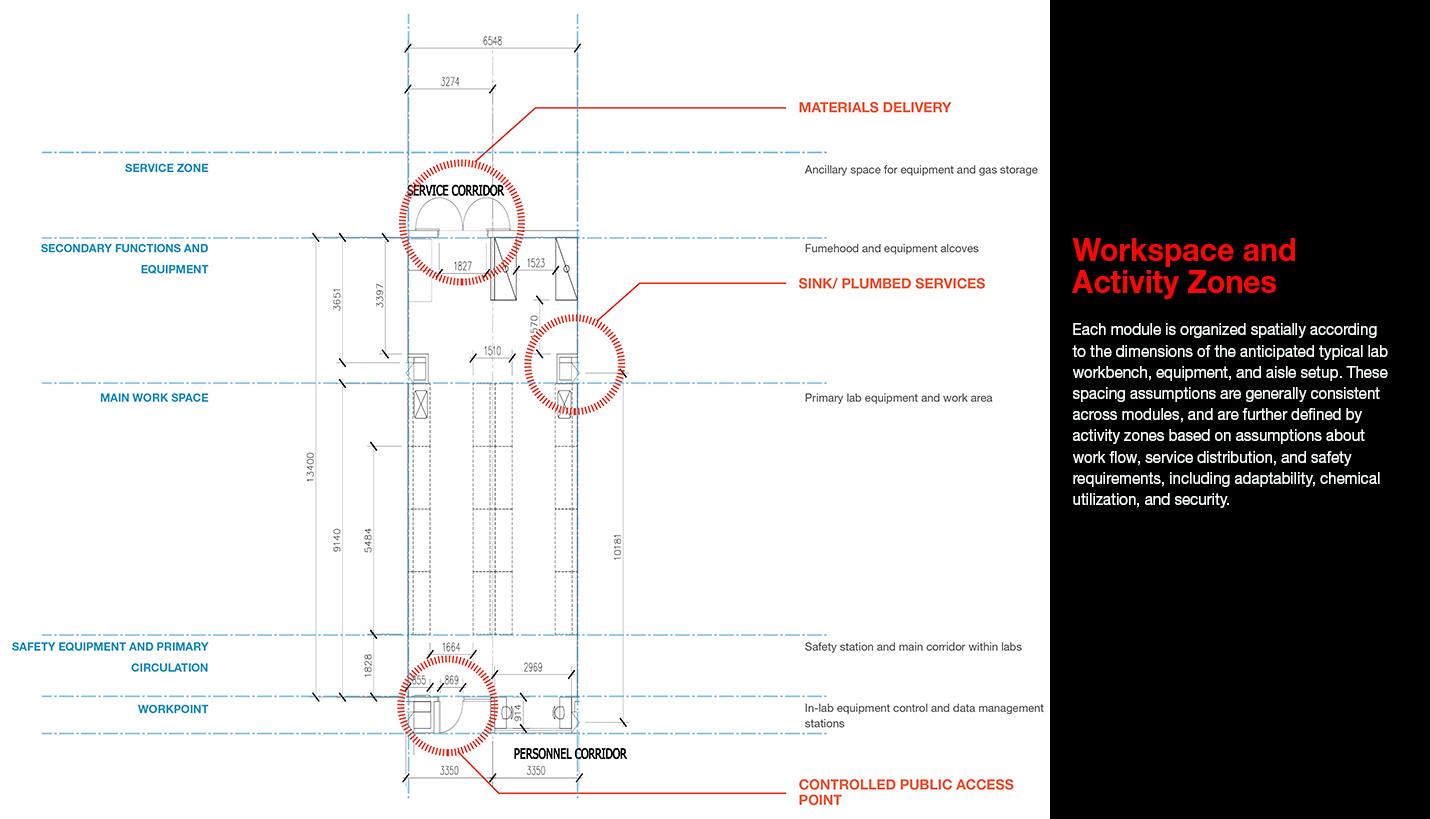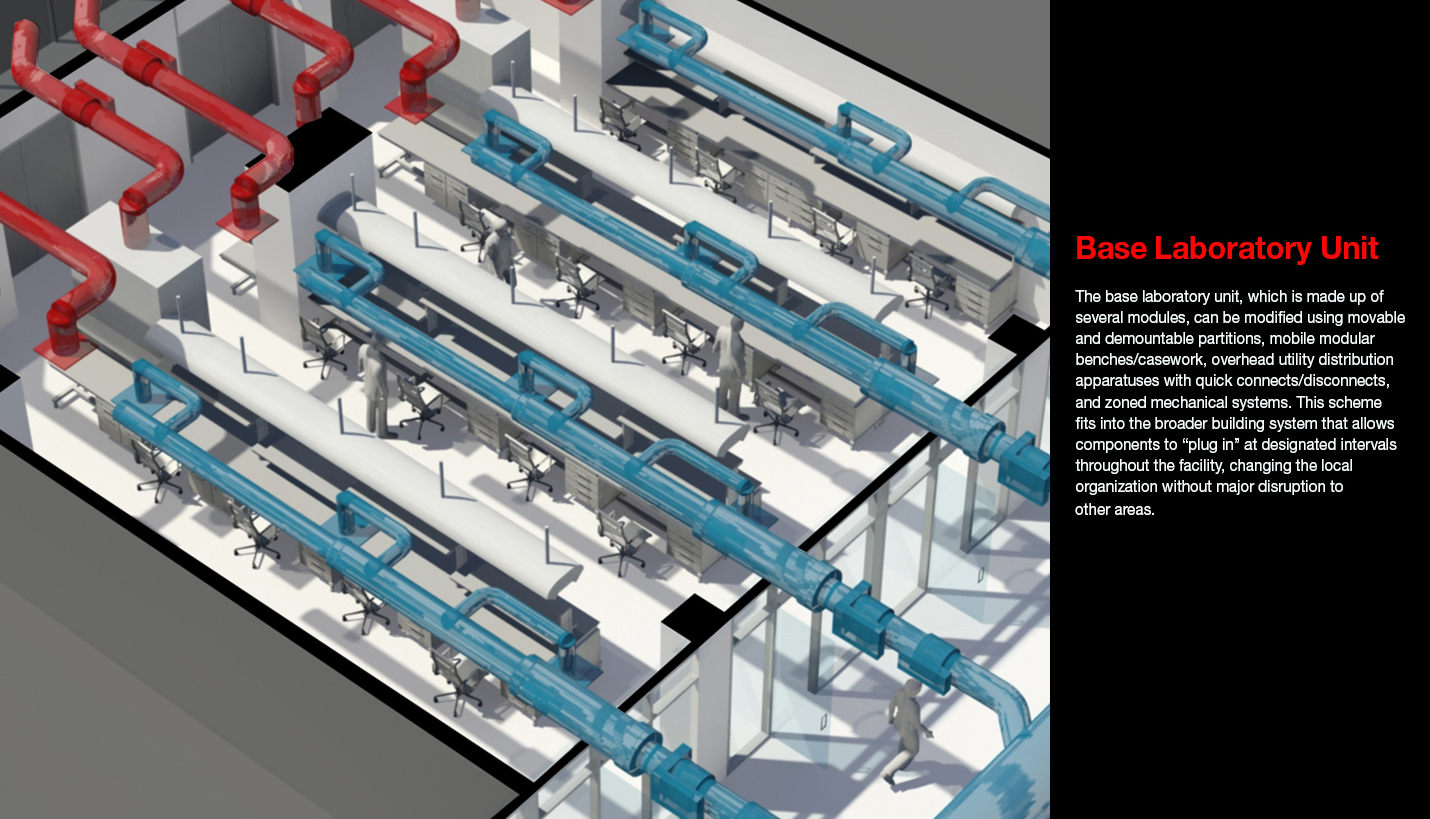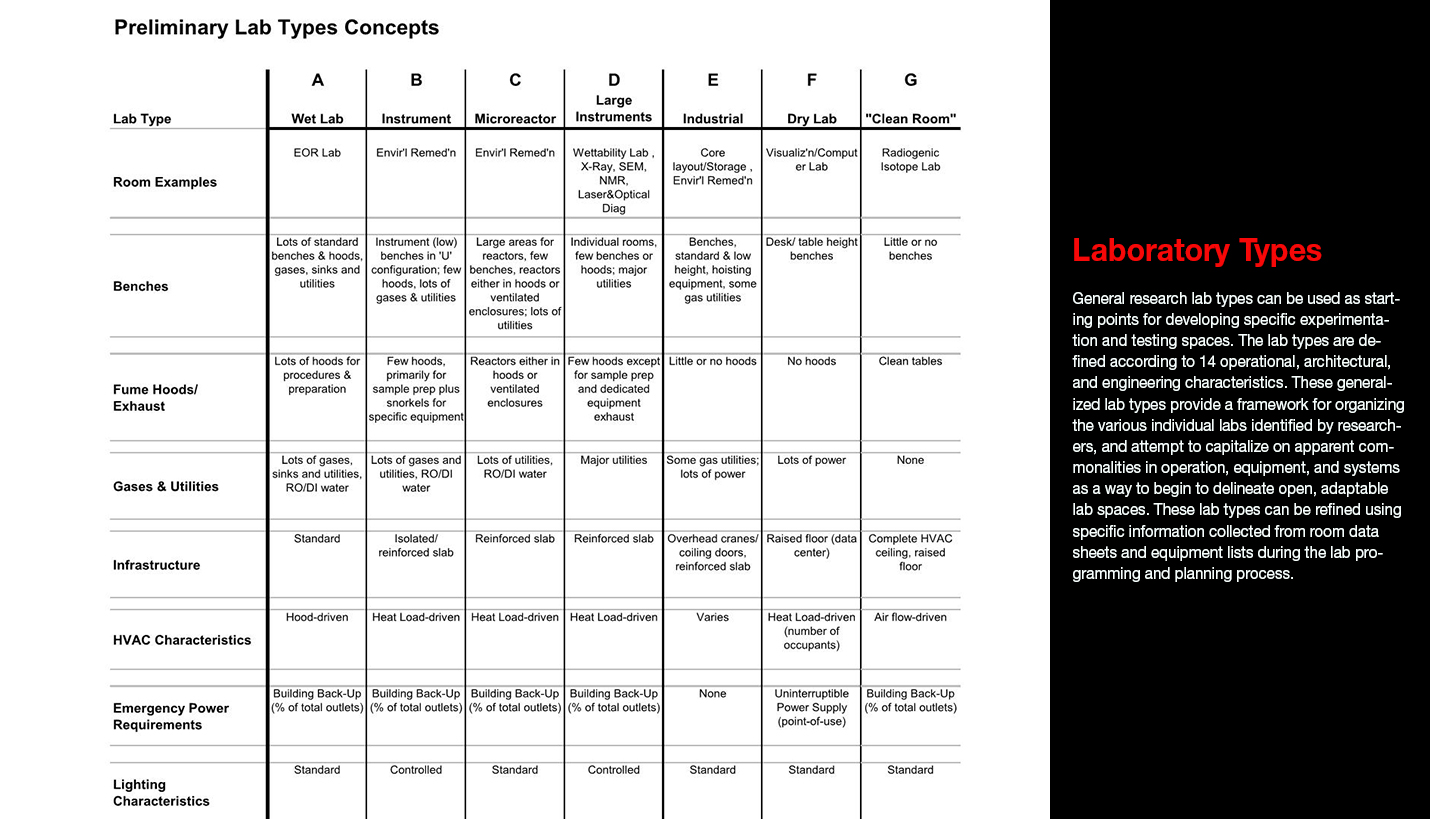Laboratory Design Process: Planning for Flexibility
If houses are designed for people, then laboratories are designed for equipment. Perhaps an oversimplification, this statement highlights the impact of scientific instruments and experimental materials, beyond building occupants, on the design of research facilities. Yet, laboratory designs that fail to consider the users and to accommodate the multiple ways in which researchers work are likely to yield buildings with limited useful lives that underperform and hamper rather than enhance productivity.
The primary objective in laboratory planning is to provide a quality research facility that achieves the client’s goals for the project. In today’s highly competitive climate, this increasingly means a world-class laboratory building that fosters free intellectual exchange and innovation—one that is architecturally appealing and maximally functional, incorporating a variety of spaces, systems, and technologies to deliver a highly collaborative environment for advanced science and engineering.
Four principles guide the design of any premier laboratory building:
- Safety: protecting people, equipment, and data
- Function: supporting specific purposes and adapting to change
- Efficiency: conserving space, energy, and environment
- Cost: maximizing usable space and optimizing systems
The hazardous nature of the work being performed in laboratory facilities, and the resulting mechanical and electrical systems and infrastructure to ensure safety, set them apart from other types of buildings. An increased awareness and concern about the tremendous amount of resources consumed by labs have fueled the demand for more cost-effective and environmentally-responsive facilities. Each aspect must be balanced in such a way as to maximize the usable space that can be achieved, in order to make the building viable as a long-term research and instructional resource. Ultimately, research activity and funding have to be sustained—and this is directly related to the availability of quality space to support the range of research needs.
Click through the above gallery of images for more on flexible laboratory design.
Contributed By
Verrick D. Walker PhD, LEED AP, CDT
04/18/2018
People
Related Posts
- Page Receives Award for Helping UConn Come Home
- Scientific Learning Spaces Activated as Teaching Tools
- National Laboratory to Improve Health in the Caribbean
- Benchmarking and Trends Research: Promoting Innovation in Laboratory Design
- New National Reference Lab Coming Soon
- A Park in The Sky
- When the User Is Also the Designer

















